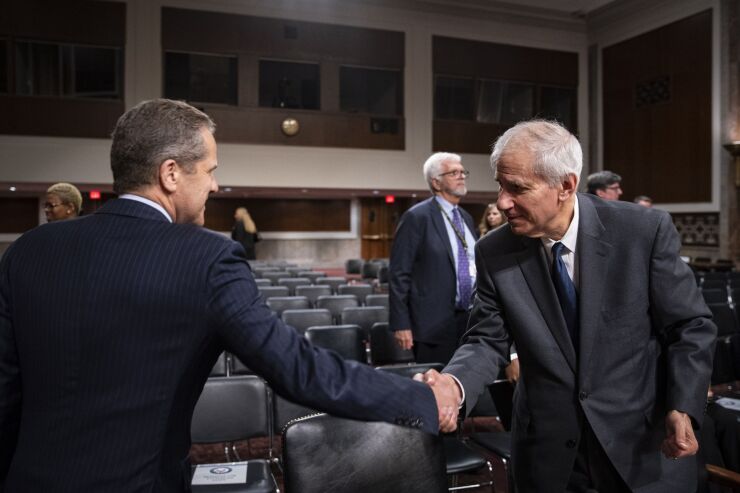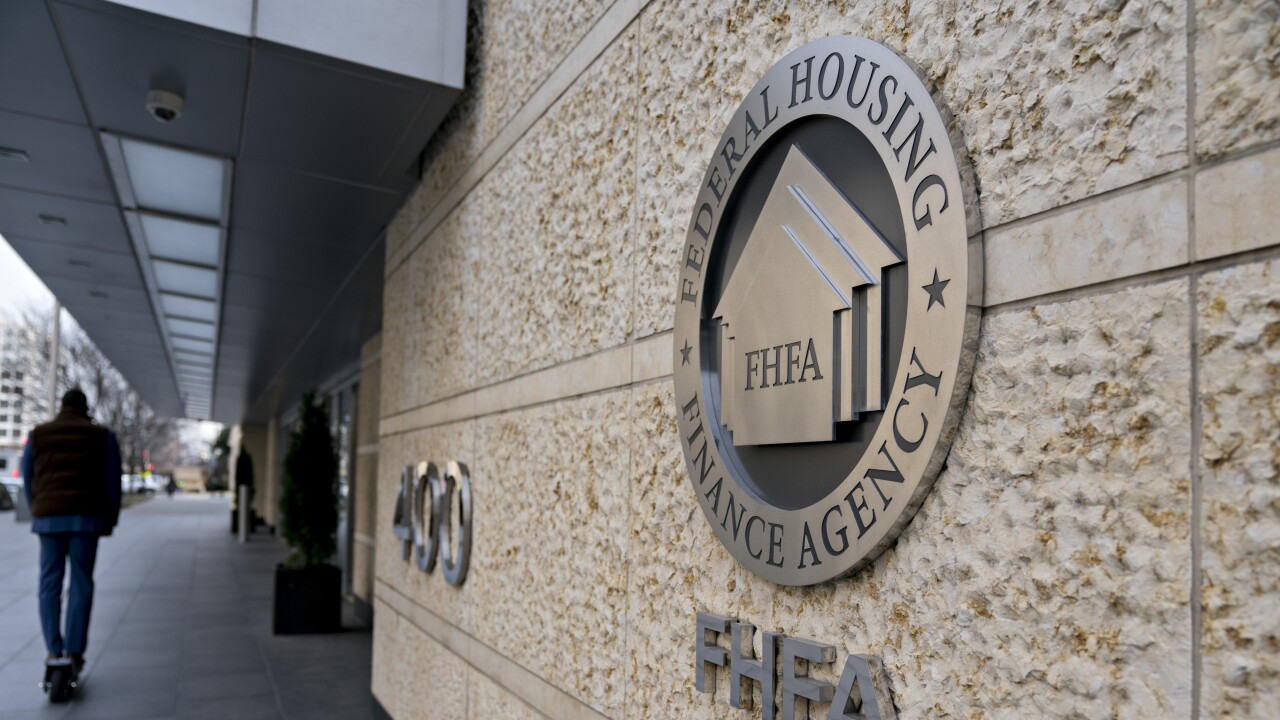
WASHINGTON — While it's clear bank regulators plan to make substantive changes to a bank
The Basel proposal was hotly contested when it was first proposed last July on a number of grounds, including the
Lawyer Gregory Lyons of Debevoise and Plimpton said he isn't confident of the timeline just yet, given regulators still appear to be hashing things out internally.
"I think there's different proposals circling around how to amend it, but honestly, I'm not sure they know," said Lyons. "We're pretty close to what's going on and I just do think there's a lot of internal — good faith — but internal debates about how this is all going to play out."
Corporate lawyer Chen Xu, also with Debevoise, says he thinks the heads of the agencies involved in the rulemaking — which is a joint effort between the Federal Reserve, the Office of the Comptroller of the Currency and the Federal Deposit Insurance Corp. — would like to strike a compromise with their capital skeptic colleagues, some of which are within the same agency.
"Some of the agency principals hope if they make enough concessions, they can get it through by August so this doesn't get tied up with the election," he said. "We've been hearing that view is gaining traction, but we've also heard that there are a number of folks inside the agencies who would rather have a reproposal, and right now it's hard to see who's winning."
But whether those adjustments can be incorporated into a final proposal or must be included in a new proposal — or some mix of both — remains unclear. Under the Administrative Procedure Act,
Jaret Seiberg, financial policy analyst at TD Cowen says he expects regulators will at least partially withdraw and re-propose the rule — often dubbed Basel III endgame — given statements from
"Powell has effectively made this commitment to Congress," commented Seiberg. "It doesn't mean there is zero probability for the rule to be finalized, but a re-proposal seems likely."
Regulators
While the Fed is the most politically independent of the financial regulators, it is facing pressure from both the financial industry — which wants a re-proposed rule — while
"The Fed may put out something that basically looks like a reproposal but is called something else and allows the public to comment without starting the process from scratch," said Katz. "If the Fed were to do that in the fall — before the elections — it could finalize the Basel endgame rule next year, probably in the first half."
Banks and their trade group representatives have been vocal in their opposition to the Basel proposal and have availed themselves of
While the agency trio has yet to formally announce planned revisions to the rule, industry allies within the regulatory state have begun to provide cover for the kinds of changes banks are demanding.
Fed Governor Michelle Bowman —
"I think we addressed the challenges that we faced during the earlier financial crisis through the implementation of Dodd Frank, I think those have proven to be successful," she said. "What led to SVB failing was not the same thing that led to the real estate crisis back then, earlier, a decade ago."
"While these steps would be a reasonable starting place, they are not a replacement for a data-driven analysis and a careful review of the comments submitted," she said during a fireside chat following her remarks. "This would result in a better proposal that includes changes to address not only these concerns, but also many other concerns raised by the public."
Lyons says two of the major issues banks have identified with the rule are the scope of banks — largely those with over $100 billion in assets — roped into the rule's remit, as well as the market and operational risk portions flagged by Bowman, which he says is one of the key concerns for big banks.
"I think there are issues of relevance both to the larger banks, given the operational and market risk issues," he said. "And to the smaller banks, in the $100 billion asset class, regarding how much of this will apply to them."
Regardless of what path regulators take, the banking industry and its allies have questioned the need for capital reforms in the first place, given their view that firms are well-capitalized. But rather than fight tooth-and-nail to prevent any new capital requirements, some think they may accept a slimmed-down version of the proposal in order to achieve regulatory certainty.
"We believe banks would prefer to accept a reasonable final rule than to extend this battle for what could be another five years," Seiberg remarked. "The timing for finalizing the rule is after the inauguration. It is why there is election risk, though we believe the bulk of the final rule is likely to have bipartisan support at the Federal Reserve."
Given ongoing talks at the agencies about how to proceed, the industry will likely be eyeing its allies on the inside, who can help shape the rule to their liking. Bowman's comments on Wednesday suggest the industry may get their way in many regards.
"As Chair Powell has said, that he expects broad and material change to this proposal, and I would hope that a number of the things that I've identified in a number of speeches throughout the last year or since the proposal was introduced would be included in some of those changes," she said. "If the proposal is [put] forward, it has to be voted on by the board and the other regulatory agencies — so we'll just have to see what happens."
Lyons
"[Chevron] raises the question of how much the courts have to defer to the agencies in rulemakings and so forth," he said. "I think it heightens the stakes — or risks, depending on your point of view — banking agencies or their trade groups may push back in court against rules they perceive to be problematic."
Kyle Campbell contributed to this article.






